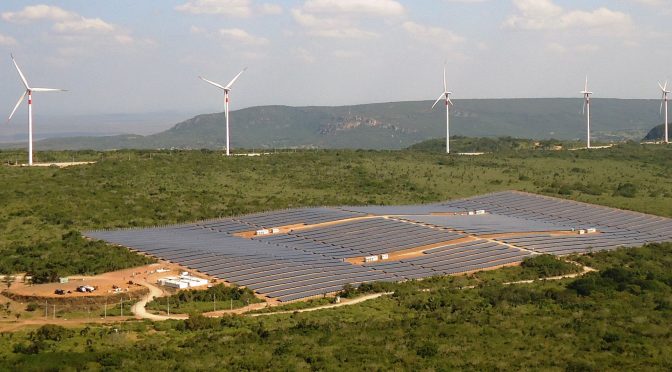Enel Green Power sent out a message from COP26 to developing nations: moving beyond coal quickly is possible through renewables, energy efficiency and the circular economy – but it’s also important to create shared value with communities.
Having revolutionized the way it works and does business by focusing on renewables and decarbonization to the extent that it has become a Renewables Super Major, Enel is now in a position to help emerging nations on their journey to sustainable development and the energy transition. That said, a just transition that enables both social and economic development can only be achieved by adopting a long term vision that takes the local context into account and really involves the communities concerned. It also requires the participation of the private sector and the streamlining of regulatory processes.
This is Enel’s main message from our Group’s presence at COP26 in Glasgow, where the world came together in an attempt to make tangible progress in the battle against climate change. Our vision was the focus of two interesting discussions on the theme of the energy transition in emerging economies, given by Salvatore Bernabei, head of Enel Green Power, and Silvia Piana, head of EGP Regulatory Affairs for Africa, Asia and Australia.
The coal phase-out
The energy transition is a necessary but gradual step that must take into account context and a clear vision of the direction it’s moving in, explained Bernabei, who on November 5 was part of the panel discussion From Coal to Renewables, The Energy Transition in Emerging Markets.
Bernabei spoke about Enel’s decision to give up coal, which is still an important energy source for many developing countries. Our phase-out process began in 2017 and the Group will have completed its move away from coal worldwide by 2027 (which will happen in Italy by 2025). Enel has closure and conversion plans for 43 power stations across Europe and Latin America. In the meantime, by 2030, our renewable energy capacity will grow by 100 Gigawatts and our CO2 equivalent emissions will drop from an initial 400g per kWh to just 82 grams. This, as the EGP’s Number 1 explained, is genuine disruption: radical change thanks to technological innovation.
Bernabei went on to explain that the sites of the former power stations will be upgraded as part of a variety of projects, with many soon playing host to so-called energy hubs for future generations. Solar or wind farms flanked by storage systems (from chemical to green hydrogen via gravitational storage). In some cases, we are being asked by Systems Operators to convert coal systems to gas, which are newer and more efficient, to guarantee grid stability and security.
Sustainable development for emerging markets
According to Bernabei, emerging economies can already opt for a rapid transition by refusing to build new coal stations and converting their existing ones. However, they must first and foremost understand the needs of the local area and communities, by evaluating the impact on employment and how this can be managed. They should also be aware that green energies actually create more jobs, not fewer, but that it’s necessary to retrain or relocate staff, without ever leaving anyone behind.
One crucial factor in completing the transition is the need to tackle and untangle bureaucratic and regulatory issues that often slow the process down. Investment in new grids, energy efficiency and the circular economy is important too, because renewables alone are simply not enough. This means changing our lifestyle and making it more sustainable – which, however, doesn’t mean more expensive.
The question of development is pivotal. And for emerging economies, this involves talking in terms of sustainable development more than energy transition because they have urgent problems they must deal with, including access to energy, population growth and urbanization, explained Silvia Piana during the panel discussion Accelerating the energy transition in developing economies on November 2.
The key factor in sustainable development – especially from an environment and social point of view – is renewables, especially wind and solar power. This is because they are generated using cost-free natural resources, offer low-cost electricity, are quicker to implement, and are decentralized and resilient.
But as Piana went on to explain, renewables also require high capital injections: as a result, in many emerging economies, such as African countries, private sector involvement is absolutely vital and demands a long term approach with credible goals. We need grids that work, and we need to think about grid development before the plants themselves are built.
What is no longer essential for the development of renewables is subsidies: in many countries, costs have already reached or are close to reaching so-called grid parity. What is needed instead is a clear, transparent and predictable regulatory framework for their development and specific guarantees from institutions to ensure that banks will agree to finance the contracts.
So is there an existing model that should be followed? Piana pointed to South Africa, which in 2011 launched its first tenders for renewable plants and has an independent regulatory authority that implements consultation processes, offers state guarantees on contracts and has a well-structured energy market that is gradually but consistently transitioning to decarbonization.
So, the energy transition is possible, but it requires a holistic vision and a flexible approach.

